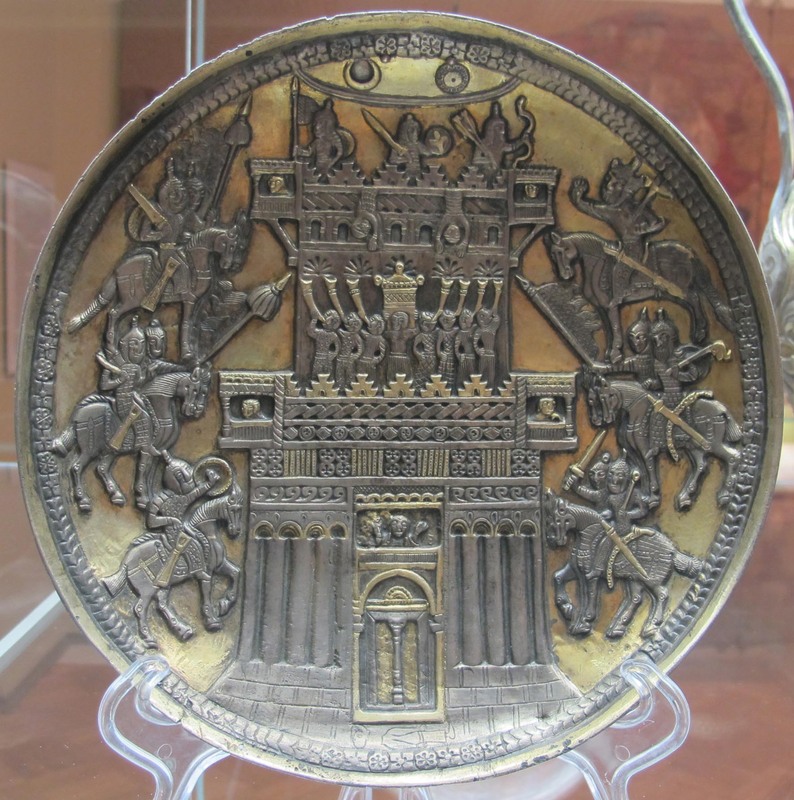Anikova Plate
Type:
Plates
Date:
Ninth to tenth century
Location or Findspot (Modern-Day Country):
Kazakhstan
Medium:
Gilt-silver
Dimensions:
Diameter of 23.7 cm
Description:
The gilt-silver Anikova Plate is named after its findspot near the village of Anikova (Russia), although it was probably made in the southeastern part of modern-day Kazakhstan, where there were communities of Nestorian Christian Sogdians even after most of Sogdiana had converted to Islam. Before the Muslim conquests of Central Asia in the eighth century, the primary religions of Sogdiana were Zoroastrianism, Manichaeism, and Buddhism. This plate was made for a Sogdian minority who practiced Nestorian Christianity, a form of Christianity that was also represented in the Sasanian Empire. The plate was most likely traded north from its place of production along one of the north–south "Fur Roads."
The scene represented on the Anikova Plate is from the biblical book of Joshua and shows Israelites besieging the Canaanite city of Jericho. At the very center of the plate, a figure holds up the Ark of the Covenant while eight figures flanking him blow their horns.
The scene represented on the Anikova Plate is from the biblical book of Joshua and shows Israelites besieging the Canaanite city of Jericho. At the very center of the plate, a figure holds up the Ark of the Covenant while eight figures flanking him blow their horns.
Relevant Textbook Chapter(s):
5
Repository and Online Resources:
• Learn more about the Anikova Plate (now in the State Hermitage Museum, St. Petersburg) and other Sogdian metalwork on the website of the Freer
Gallery of Art and Arthur M. Sackler Gallery, Smithsonian Institution.
Image Credits:
Wikimedia Commons
Tags:
Status and identity,
Central Asian,
Christian,
Metalwork,
Bible

